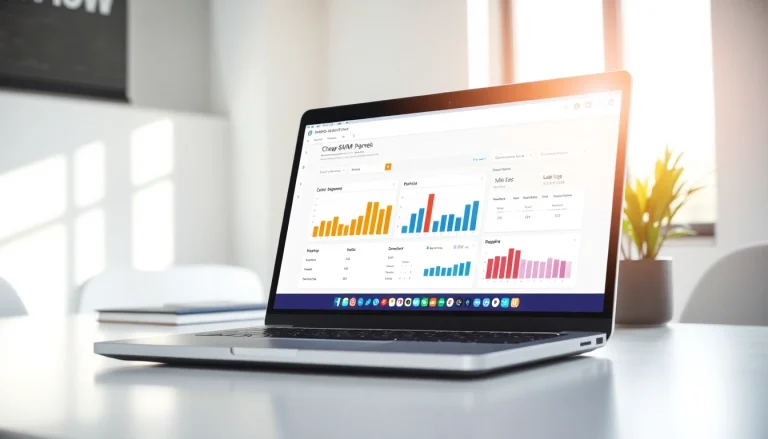
The Importance of a Real Estate Blog
In today’s digital age, having a strong online presence is crucial for real estate agents and agencies. One of the most effective ways to establish that presence is through a well-crafted real estate blog. A blog offers an avenue not just to share properties, but also to connect with potential buyers and sellers, effectively showcase your expertise, and build trust with your audience.
Why Blogs Are Essential for Agents
Blogs serve as a platform for real estate agents to share valuable insights and maintain a connection with their audience. By providing informative content—such as market updates, buying tips, and neighborhood highlights—agents can position themselves as thought leaders in the field. Moreover, blogs can enhance search engine visibility, driving organic traffic to your website.
Furthermore, regular blogging creates opportunities for community engagement. Clients and potential customers can comment on posts, ask questions, and share posts across social media. This interaction allows agents to build a loyal following while expanding their reach.
Building Credibility Through Content
Creating high-quality blog content builds credibility in the eyes of prospective clients. When potential clients encounter insightful articles about local market trends, home buying tips, or seller’s advice, they are more likely to see the agent as knowledgeable and trustworthy. This perceived expertise can directly influence their decision when seeking representation in real estate transactions.
Additionally, guest blogging or collaborating with housing experts can further enhance credibility. Featuring testimonials or success stories can also instill trust in readers, demonstrating the agent’s capability in facilitating successful transactions.
Connecting with Your Audience
A successful real estate blog fosters a connection between agents and their audience. Personalized content, such as stories about clients and unique local events, can help humanize the agent and make them more relatable. Addressing prevalent questions or concerns showcases that you understand the audience’s needs and are willing to provide solutions.
Utilizing various formats—like videos, infographics, or podcasts—can engage a wider audience, ensuring that your message reaches diverse demographics. Posts tailored specifically for first-time homebuyers, real estate investors, or renters can also resonate with targeted segments, making your blog an indispensable resource.
Key Topics to Cover in Your Real Estate Blog
The essence of a gripping real estate blog lies within the topic matter. Here are several vital areas to focus on:
Market Trends and Insights
Staying updated with market trends is crucial in real estate. Readers appreciate timely information on fluctuations in housing prices, interest rates, and economic indicators affecting the market. Summaries of quarterly reports, emerging neighborhoods, and predictions for future trends can position your blog as a go-to source for current data.
To add depth, accompany statistics with commentary that discusses what the shifts mean for buyers and sellers. Infographics presenting visual data can elevate the accessibility of dense information, making it engaging for those less familiar with complicated statistics.
Home Buying and Selling Tips
Homebuyers and sellers are constantly seeking guidance on the real estate process. Your blog should provide practical, actionable tips to identify the right property, navigate financial considerations, and understand the duties involved in buying or selling. Offering advice on negotiating tactics, pricing strategies, and preparing for open houses can empower your readers.
Creating a comprehensive checklist for buyers or sellers to follow can also enhance the user experience and provide tangible value. These resources can encourage readers to share your content or return for future information, solidifying their connection to your blog.
Neighborhood Spotlights and Community News
Highlighting specific neighborhoods or local communities can attract niche audiences. In-depth features on schools, parks, upcoming developments, and community events can draw readers interested in particular areas. Showcasing local businesses or conducting interviews with community leaders can also contribute to a richer, more engaging blog.
Furthermore, maintaining an ongoing community segment fosters an understanding of the local market’s social landscape and enhances your image as an engaged community member. Visitors looking to relocate will find such localized content invaluable when considering their options.
Best Practices for Effective Blogging
Creating an engaging blog is not just about the topics you choose but also about how you present that information. Below are essential best practices for ensuring your blog stands out.
Writing Engaging and Informative Content
Engagement begins with quality writing. Crafting well-structured posts with a clear focus and logical flow helps maintain reader interest. Incorporate storytelling techniques to make your points memorable. Use headings and lists to break up large text blocks, improving readability.
Moreover, consider your audience’s knowledge level when writing. Use professional language when appropriate, but ensure your posts remain accessible. Aim to create content that is informative yet digestible, allowing your audience to absorb the material comfortably.
Utilizing SEO Strategies
Incorporating effective SEO strategies is paramount for improving visibility in search engine results. Research relevant keywords that resonate with your target audience and seamlessly integrate them into your posts. Use these keywords in the title, subheadings, and throughout the article without compromising readability.
Additionally, ensure that your blog is optimized for mobile devices and loads quickly. Both search engines and users value websites that offer an optimal viewing experience. Using meta descriptions and alt tags for images can further enhance SEO efforts, making content easily indexable for search engines.
Incorporating Visuals for Better Engagement
Human beings are visual creatures, and incorporating images, videos, and infographics into your blog can enhance reader engagement significantly. People are more likely to remember information that is accompanied by visuals. Consider including photos of listed properties, neighborhood shots, or relevant charts illustrating market changes.
Videos explaining complex concepts can also add value. Moreover, ensure all visuals are high quality and properly credited if necessary. This additional layer of professionalism can further bolster your blog’s credibility.
Promoting Your Real Estate Blog
Creating compelling content is only the first step; promoting it effectively is just as crucial for maximizing its reach. Here are strategies for promoting your real estate blog.
Leveraging Social Media Platforms
Social media platforms can play a significant role in driving traffic to your blog. Utilize channels like Facebook, Instagram, LinkedIn, and Twitter to share links to your posts along with eye-catching snippets. Engage actively with your audience through comments and shares, fostering a sense of community around your brand.
Consider creating dedicated groups or pages focused on local real estate discussions, where you can share insights and drive traffic to your blog further. Tailoring your content to suit different platforms and audiences will maximize engagement and visibility across your online presence.
Email Marketing Strategies
Email marketing remains a potent tool for driving traffic and keeping your audience engaged. Compile a subscriber list and distribute regular newsletters featuring links to your latest blog posts, alongside exclusive tips and insights. Using catchy subject lines and appealing visuals can increase open and click-through rates.
Additionally, segmentation of your email list can lead to more personalized communication. For instance, delivering customized content based on clients’ past inquiries can lead to higher engagement rates as readers find more relevance in the information you send.
Networking with Other Industry Professionals
Networking with other real estate professionals can help promote your blog further. Collaboration on webinars, industry events, or joint projects can introduce your blog to new audiences. Guest posts allow for reciprocal linking and can enhance your readership base.
Developing relationships with local businesses can lead to mutually beneficial promotions as well. For instance, integrating local business highlights into your blog can encourage cross-promotion, while also endearing your blog to community readers.
Measuring the Success of Your Real Estate Blog
Success in blogging should be measured quantitatively and qualitatively to gauge effectiveness and adapt strategies accordingly. Here’s how to assess your blog’s performance.
Analyzing Web Traffic and Engagement Metrics
Utilizing tools like Google Analytics provides valuable insights into your blog’s performance. Monitor overall traffic, page views, average session duration, and bounce rates to understand reader engagement. Identifying which posts receive the most traffic can guide future content creation efforts.
Engagement metrics, such as social shares, comments, and backlinks, are equally important. A highly shared post indicates strong resonance with your audience, offering clues toward content types that appeal most.
Gathering Reader Feedback and Improving Content
Feedback from your readers can offer invaluable insights into enhancing your blog’s quality. Encourage comments and suggestions on your posts. Conducting surveys can also allow you to gather focused feedback on what topics readers want more of.
Considering feedback while evaluating performance metrics can help refine your content strategy. Being open to change and experimenting with new styles or formats can lead to improved reader satisfaction.
Adjusting Strategies Based on Performance
Once you’ve analyzed your metrics and collected feedback, it’s imperative to adjust strategies accordingly. Develop a responsive approach, focusing on content types that resonate most with your audience while phasing out less popular topics.
Regularly revisiting and updating older posts can also keep your blog fresh and relevant, ensuring continual reader interest over time. Your blog should evolve alongside changing market conditions and audience preferences to remain valuable.






